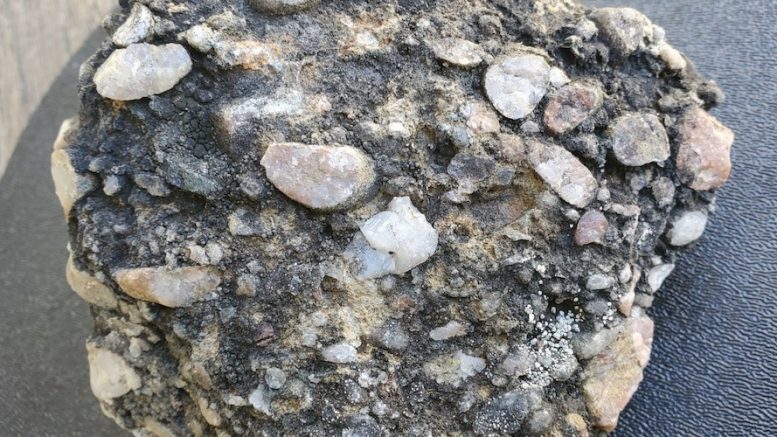Researchers from the University of Alberta, Penn State University and the University of Padua discovered diamonds in an outcrop at an unrealized gold deposit in Canada’s Nunavut territory, an association that mirrors what can be found in South Africa’s Witwatersrand Goldfields.
The Witwatersrand Goldfields comprise the world’s biggest gold deposit, responsible for more than 40% of the gold ever mined on Earth.
Led by Graham Pearson, a research team travelled to the Kitikmeot Region and took a 15 kg. sample of conglomerate from Silver Range Resources’ (TSXV: SNG) Tree River property. Then, they used mass spectrometry equipment to date the rocks back to 3 billion years ago.
The samples were sent to the Saskatchewan Research Council, whose experts found three small diamonds, less than a millimetre in diameter.
“My jaw hit the floor,” Pearson said in a statement. “Normally people would take hundreds of kilograms, if not tonnes of samples, to try and find that many diamonds. We managed to find diamonds in 15 kilos of rock that we sampled with a sledgehammer on a surface outcrop.”
According to the scientist, the geologic implications of the finding are immense.
After identifying an inclusion in one of the diamond samples, Pearson’s team proposed the idea of the diamonds being derived from a small, deep but cool lithospheric root, which is the thickest part of the continental plate.
“This is something completely unexpected from what we think conditions were like 3 billion years ago on Earth,” Pearson said.
He explained that stable diamonds exist only in cool parts of the mantle, so their discovery suggests there must have been very deep, 200-kilometre-thick cold roots beneath parts of the continent early in Earth’s history.
In the researcher’s view, although there is always an argument about the relationship between inclusions and diamond deposits, in this case, there is no argument because they now know that the rocks were eroded onto the Earth’s surface.
“It tells us there’s an older source, a primary source of diamonds, that must have been eroded to form this diamond-plus-gold deposit,” he said. “This also means mining diamonds in the area would not necessarily require very deep mines if more economic outcrops of these rocks can be found.”
— This article first appeared in MINING.com, part of Glacier Resource Innovation Group.


This is a very interesting discovery, no doubt. But could these diamonds not be impact diamonds? If such no great crustal depth would be required to generate them…